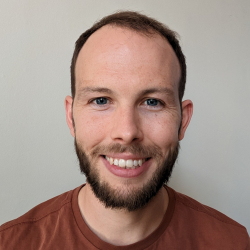Lepp 2022.863200
Lepp A. P., Simkins L. M., Anderson J. B., Clark R. W., Wellner J. S., Hillenbrand C-D., Smith J. A., Lehrmann A. A., Totten R., Larter R. D., Hogan K. A., Nitsche F. O., Graham A. G. C., Wacker L. 2022. Sedimentary Signatures of Persistent Subglacial Meltwater Drainage From Thwaites Glacier, Antarctica. Front. Earth Sci. 2022.863200.
Graham 15,706-713
Graham, A. G. C., A. Wåhlin, K. A. Hogan, F. O. Nitsche, K. J. Heywood, R. L. Totten, J. A. Smith, C.-D. Hillenbrand, L. Simkins, J. B. Anderson, J. S. Wellner, and R. D. Larter. 2022. Rapid retreat of Thwaites Glacier in the pre-satellite era. Nat. Geosci. 15, 706–713.
Berg 68(271), 977-986
Berg, B., and J. Bassis. 2022. Crevasse advection increases glacier calving. Journal of Glaciology, 68(271), 977-986.
Alley K 15:5187-5203
Alley, K. E., C. T. Wild, A. Luckman, T. A. Scambos, M. Truffer, E. C. Pettit, A. Muto, B. Wallin, M. Klinger, T. Sutterley, S. F. Child, C. Hulen, J. T. M. Lenaerts, M. Maclennan, E. Keenan, and D. Dunmire. 2021. Two decades of dynamic change and progressive destabilization on the Thwaites Eastern Ice Shelf. The Cryosphere 15, 5187–5203.
Martin is a Postdoctoral Research Associate in ice-sheet modelling in the School of Geosciences at the University of Edinburgh. His research interests focus on using numerical ice-flow modelling and geophysical data analysis to gain insight into past, current and future ice-sheet dynamics. His work is motivated by the need to quantify future ice-sheet contributions to sea-level rise.
As part of ITGC, Martin is using a combination of ice-sheet modeling, satellite data and machine learning to improve understanding of complex ice-sheet processes that are currently absent from most ice-sheet models. This includes the formation and evolution of ice damage (such as crevasses and fractures), which plays an important role in controlling the flow of ice. The outputs from this work will improve the representation of these processes in ice-sheet models and thereby reduce uncertainty in future projections.
Chad Naughton is the Science Project Manager for the US Antarctic Program and supports field logistics for the ITGC and other US researchers in Antarctica.
Peter is a researcher at British Antarctic Survey and is a member of the MELT team and of the Science Coordination Office.









